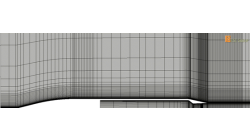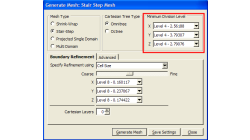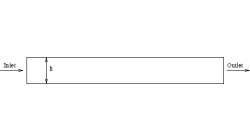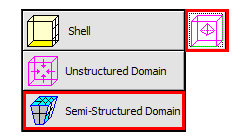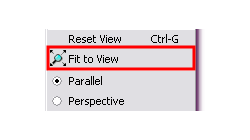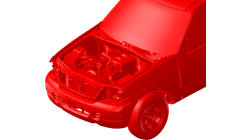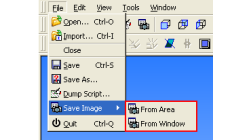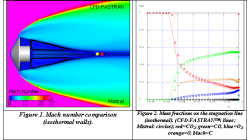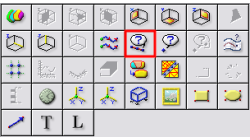- Home
- Resources
- Tips & Tricks
Tips & Tricks
Axisymmetric 2D Convergent-Divergent Boattail Nozzle Simulation Using CFD-FASTRAN
The NASA D-1.22-L boattail nozzle configuration was obtained from the MADIC (Multidisciplinary and Design Industrial Consortium) program. The geometry definition and the flow conditions are documented in NASA TP 1766 [1]. This user tip presents a validation of numerical methods against experimental data.
Abraham
Meganathan
CFD
Integer Cell Size Specification in CFD-VisCART
As it was explained in a previous tip called Understanding cell-splitting in CFD-VisCART and its effect on cell count, a small change in a specified cell size could lead to drastic changes in the cell count due to the cell-splitting rules used by CFD-VisCART.
Abraham
Meganathan
CFD
Parametric studies using CFD-GEOM and SimManager
Parametric studies controlled by SimManager give the useful ability to perform several routine simulations. It allows to use CPU time more effectively and reduce user interaction. In other words, it is possible to automate the process of mesh generation in GEOM, model setup in CFD-AGE-GUI, solver run, and visualization in CFD-VIEW. In this user tip, automatic geometry manipulation and mesh creation will be discussed.
Abraham
Meganathan
CFD
Importing external data in the CFD-VIEW Plotter
Comparing computational results to experimental data is a task often asked of CFD analysts and engineers. The line/curve plotter in CFD-VIEW is commonly used for plotting computational results along curves, such as line probes, surface slices, time histories, etc. CFD-VIEW offers a feature that allows users to import experimental or other external data in the same plot, thus making it easy to compare results.
Abraham
Meganathan
CFD
Semi-Structured Domain Stitching in CFD-GEOM
A feature that allows users to stitch together a Semi-Structured domain is available in CFD-GEOM. This feature gives the user flexibility of stitching two end faces with different topologies, i.e. a geometry that cannot be extruded.
Abraham
Meganathan
CFD
Fit to View in CFD-VisCART
In CFD-VisCART, the 'Fit to View' function was improved in V2007. It now checks the blanking status before setting the view. In this tip, a car model will be used to demonstrate the Fit to View capability.
Abraham
Meganathan
CFD
Coloring Surfaces in CFD-VisCART for Better Model Visualization
A typical model imported into CFD-VisCART may contain a number of parts and surfaces. By default, all surfaces come in with the default color (set under Edit → Preferences → Colors → Geometry Colors → Surfaces). Representing these surfaces with different colors would improve the appearance of the model and make it easier for the user to distinguish one surface (or part) from the other.
Abraham
Meganathan
CFD
CFD-VisCART 'Save Image' feature
As in CFD-VIEW, CFD-VisCART has a 'Save image' feature that allows you to save snapshots of you model. If you are interested in this tip, please read on.
Abraham
Meganathan
CFD
Chemical-kinetic Model for Mars Atmosphere Re-entry Applications
The shock layer flow over a blunt body entering a planetary atmosphere at a hypersonic speed will dissociate and partially ionize. A reliable prediction of the flow-field for such application requires a chemical-kinetic model. For Mars atmosphere, the five species Park'94 is considered [1]. The dissociation of CO2 is producing C, CO, CO2, O and O2.
Abraham
Meganathan
CFD
User Defined Curve Probes in CFD-VIEW
CFD-VIEW allows the user to create curve probes from a file containing XYZ data. This feature gives the user flexibility of collecting data on any specified/desired curve in the computational domain. As an example of use, these "curved line" probes could be used to sample simulation data at the same locations that experimental data was collected.
Abraham
Meganathan
CFD
